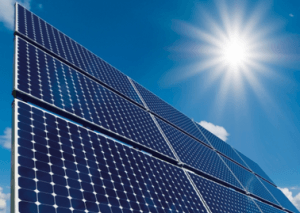Ghana abounds in renewable energy resources for improved electricity supply – UENR
 Ghana has several renewable energy resources (RERs) like wind, solar PV, mini and small hydro and modern biomass, that can be exploited for electricity production and supply in the country.
Ghana has several renewable energy resources (RERs) like wind, solar PV, mini and small hydro and modern biomass, that can be exploited for electricity production and supply in the country.
This is contained in a document of study undertaken by Dr. Samuel Gyamfi and his colleagues at the Department of Energy and Environmental Engineering of the University of Energy and Natural Resources (UENR), and a copy made available to the Ghana News Agency (GNA) recently in Sunyani.
The study titled “Improving Electricity Supply Security in Ghana – the Potential of Renewable Energy” investigated the potential contribution of renewable energy resources to the improvement of the electricity supply security of the country
The investigation also identified barriers for utilizing these resources for electricity generation in the country, and reviewed government policies and programs to promote utilization of renewable energy.
It cited that the installed capacity of the country’s hydro power was small as compared to the exploitable potential, noting that the development of solar power had been limited to only few homes, usually in the form of solar home systems.
The investigation, however, bemoaned that despite a good wind and biomass resource potential, the technologies to harness them for electricity production had not been demonstrated on a commercial scale in the country.
According to the study, “Ghana has approximately 413 km2 area with good-to-excellent wind resource which could support a little over 2,000 MW of wind power development, and if moderate-to-excellent wind resources were included, that could go up to 5,640”.
The country has an estimated additional hydro power potential of 2000 MW, of which 1200 MW is expected to be produced from proven large hydro sources, with the rest coming from small and medium-scale hydro sources, the study indicated.
It said extremely large solar radiation resources were available in many parts of the country, especially in the northern regions where the electrification rate was very low.
“Considering that many parts of the country receive 5/8 hours of sunshine per day at 1 kW/m2, the potential for using solar for electricity generation is very high”, the study noted.
It said while about 0.13% of the country’s electricity is generated from these resources (excluding large hydro), there is “great potential for this to increase substantially over the next decade, due to government’s commitment and legal frameworks which are being put in place”.
The study added other commitments from the government could be seen in the establishment of the UENR in 2011 to train people in renewable energy engineering and other energy related skills.
It mentioned that the KNUST had also introduced programmes in renewable energy technology and therefore established an Energy Centre to provide training, research and advisory services to public and private actors in energy technology, policy and management.
The study cited the UENR staff and students had successfully designed and built biogas plant that supplies the University’s Cafeteria with biogas for cooking, adding that the institution was currently planning to build Solar Modules Assembling Plant (SMAP), targeting the Ghanaian solar energy market.
It noted the major global energy challenges were securing a sufficient energy supply to meet growing demand, providing everybody with access to energy services and curbing that energy’s contribution to climate change.
The study stressed access to affordable and reliable energy services in developing countries was fundamental to reducing poverty and improving health, increasing productivity, enhancing competitiveness and promoting economic growth.
It observed “as a developing country, Ghana’s electricity demand has long been relatively low, although demand has been rising in recent times due to increasing economic growth, urbanization and industrial activities”.
The study mentioned some of the barriers to renewable energy exploitation in Ghana as higher electricity costs compared to the non-renewably-sourced electricity; compatibility with existing transmission and distribution networks
It said others included the remoteness of resources from key electricity demand sectors; technological immaturity; institutional inexperience and the lack of skilled technical manpower to oversee renewable energy projects.
The study observed “Ghana has a history of strategies and policies to promote renewable energy but looking at renewable energy installation status, one can say that these policies are yet to have significant impact on the renewables industry”.
It said the recently passed Renewable Energy Act to generate 10% of the country’s electricity from modern renewable energy sources by the year 2020 was expected to promote renewable energy business in the coming decade.
The study explained the Act had created the enabling environment for the exploitation of the renewable energy resources in the country through the introduction of feed-in-tariff (FIT) scheme.
The FIT comprised FIT rates, mandatory purchase of electricity generated from renewable sources, free access to the distribution and transmission systems and creation of the Renewable Energy Fund dedicated to the promotion and development of the renewable energy sub-sector in Ghana, it added.
Source: GNA
